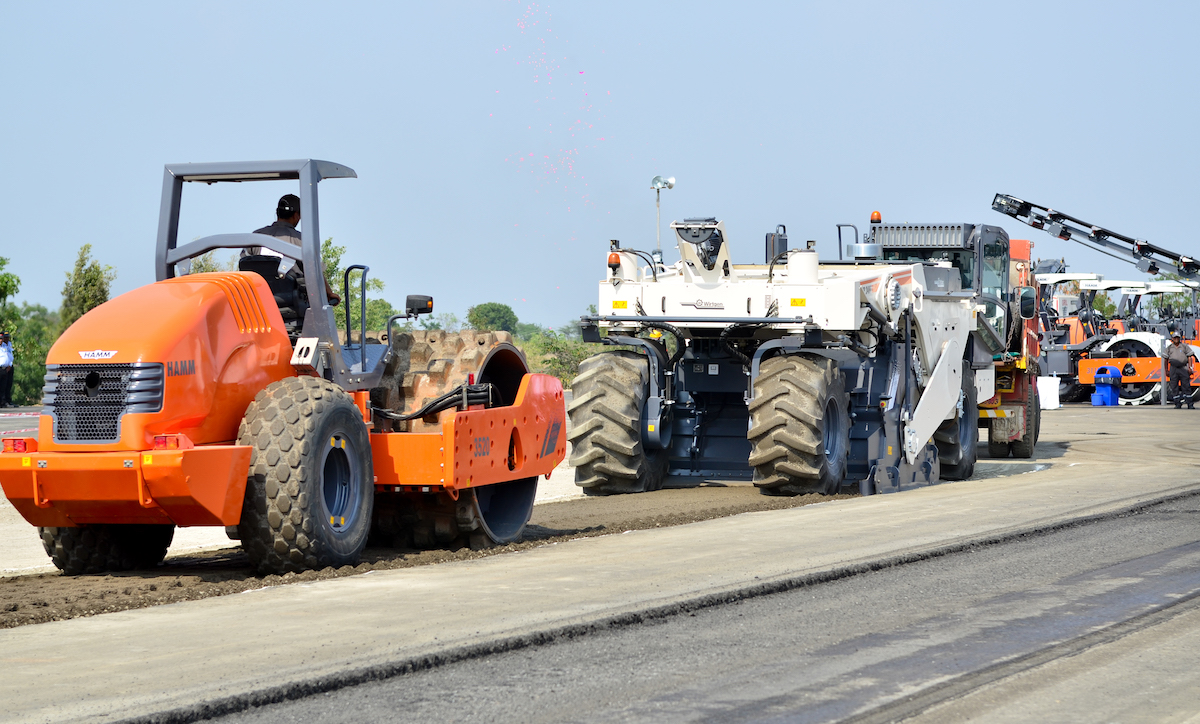
Reclaimed asphalt pavement (RAP) material is asphalt that has been milled or excavated or crushed from existing asphalt pavements or returned from job sites which is then blended with fresh asphalt mixture and other additives such as rejuvenators. The old and existing pavement is first cored to assess the RAP material properties and the amount of material that will be removed. The scarcity of raw materials, need to lower fossil fuel consumption and the carbon footprint has driven the popularity of RAP materials globally. There are challenges faced on the technical side of things, but research has advanced in finding solutions to best recycle, optimize and apply RAP materials. Typical factors influencing the quality of RAP material include:
In the State of Queensland, Australia MRTS102 Reclaimed Asphalt Pavement Material is the Technical Specification that sets out the requirements for RAP material that is used in asphalt. This article is the first part of a two-article series that assesses RAP materials.
In Queensland, Australia the selected RAP materials must comply with the following requirements:
Since the water content added to the cold recycling mixture has great effects on the final performance of the pavement, therefore the field moisture content of RAP is a key consideration when calculating the amount of water added to the cold recycling mixture according to the laboratory test results. The field moisture content of RAP will be larger if bitumen emulsion was used. The internal cohesion is important to the recycled mixture and the new pavement performance, it is necessary to identify whether the bitumen binder in RAP is still active or not. The bitumen binder in RAP can be classified by means of subjective and objective analysis. If the RAP is dark grey without shining surfaces or brittleness, the bitumen binder is inactive. Laboratory tests is an objective approach to identify the condition of the bitumen in RAP through rheological indicators including penetration value, viscosity and softening point amongst many others. It should be noticed that the bitumen must be extracted from the recycled mixture before the laboratory tests. In Australia, the extraction of bituminous binder from RAP is performed according to AGPT/T191.
In the case that asphalt binder in RAP is active, the asphalt content of RAP will play a significant role in adhesive property. In the USA, addition, the asphalt content of each RAP source can be estimated using the Ignition Oven test. For smaller projects, the asphalt content may be determined in accordance to ASTM D6307 while for larger projects, the asphalt content should be referred to AASHTO T164. In Australia, binder content and grading is performed according to Q308A or AS/NZS 2891.3.1. The statistics results, show that the asphalt content commonly ranges from 4% to 7.5%. The binder includes not only the aged asphalt binder in RAP, but also the fresh asphalt binder in the blended asphalt mix. Due to limited construction budgets, the significance of the grading of the RAP materials is usually ignored, whereas it has great contribution to the performance of the mixture. The RAP source usually can be determined by PG grading of the recovered asphalt binder from the RAP mixture. The gradation of the RAP mixture varies with different RAP source, which is associated with the mix characteristics such as stiffness, durability, stability and permeability.
The grading of the RAP material is influenced by the in-place condition of the existing material, the temperature in the milled rezone, the speed of the milling machine and the milling depth. RAP material must be blended, crushed and screened to ensure that:
The cold recycling mixture properties are highly related to the aggregate gradation which is one important quality control factor in construction with the cold recycling technology. To identify the original gradation of the recycled mixture, the aggregate sieve analysis should be conducted after ignition oven testing. Usually new virgin aggregate is probably needed to meet the requirements of the designed gradation while in some cases alternative aggregate is used.
RAP material can be processed at the central processing facility (in-plant recycling) or on the job site (in-place recycling). In the material production phase, the mixing temperature and moisture content of the RAP materials are critical in quantifying the environmental impacts. Overall, the use of RAP saves virgin asphalt binder and aggregate, reducing the negative environmental impacts associated with the acquisition process of raw materials. It is important to be selective in the removal of the old pavements for use in recycling, to ensure that the material removed is of a sufficiently high grade for future use. Prior to removing the old pavement, material testing can provide substantial information.
In the next article, we will discuss the recycling process of recycled asphalt.
References
https://doi.org/10.1016/j.conbuildmat.2018.06.006
http://dx.doi.org/10.1016/j.rser.2017.01.087
https://www.sciencedirect.com/science/article/pii/B9780128189818000059
https://www.sciencedirect.com/science/article/pii/B9780857096821500166
Your feedback is important to us. If you enjoyed reading this Global Road Technology industry update and found it informative, please let us know by leaving a REVIEW.
Are environmental regulations, health and safety concerns or potential profit loss a concern right now?
Contact Us Now